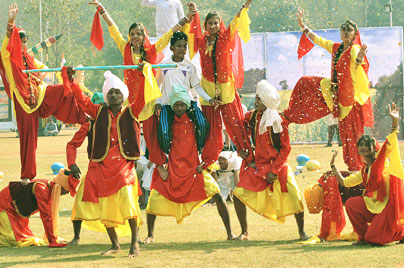The OMQ Division of Tata Steel comprises four units:
- Noamundi Iron Mine (NIM)
- Joda East Iron Mine (JEIM)
- Khondbond Iron Mine (KIM)
- Katamati Iron Mine (KTM)
There are a range of facilities for the benefit of employees at our Raw Material locations. These include hostels for trainees, knowledge and training centres, recreational facilities and a sports complex. Various social activities are held regularly for engagement.
How to get there?
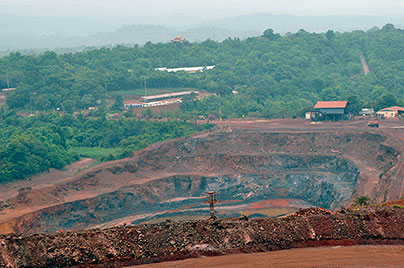
Noamundi Iron Mine (NIM)
Noamundi Iron Mine is situated in the Western Singhbhum district of Jharkhand. It is approximately 130 Km south west of Jamshedpur. Noamundi station falls on the Tatanagar–Bilaspur section of Howrah-Nagpur-Mumbai line. It is 142 Km away from Ranchi Airport (IXR), Ranchi, Jharkhand and 210 Km away from Bhubaneswar Airport (BBI), Bhubaneshwar, Odisha. There are regular trains from major cities of the country to Noamundi. The nearest Bus Stand to Noamundi is Barbil, which is 15 Km away from Noamundi.
Locate on the map >
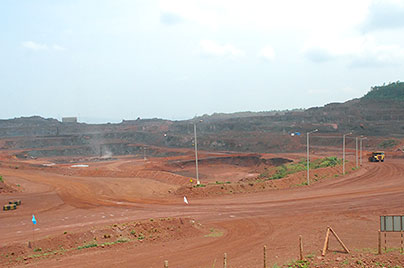
Joda East Iron Mine (JEIM)
Joda East Iron Ore Mine is situated at a distance of around 70 Km North West of Keonjhar by the side of national highway No. 215. It is one of the major municipalities of the district. Being a mineral rich locality, it is well connected by all-weather metalled roads to the Banspani Rail head (for material dispatch) and Jamshedpur. The nearest railway station is Banspani, at a distance of 5 Km from the site with aod connectivity to state capital, Bhubaneswar. Since it is at a distance of around 250 Kms from both the state capitals i.e. Ranchi & Bhubaneswar, any of the airports may be preferred depending on the destination of departure.
Locate on the map >
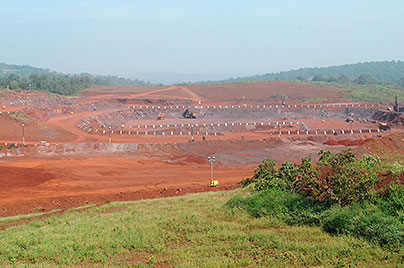
Khondbond Iron Mine and Katamati Iron Mine
Khondbond Iron Mine and Katamati Iron Mine are located in the Keonjhar district of Odisha. The nearest railway station is Barbil. These are located within a distance of 170 Km from Jamshedpur.
Locate on the map >
Ensuring a higher quality life
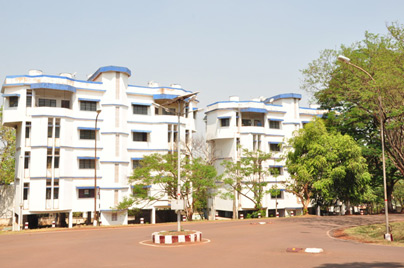
Housing facilities of OMQ Division
Accommodation colonies OMQ Division are spread across Noamundi and Joda. Both the locations have State and Central Board affiliated schools within 2 Kms of the colony. We also have a tie up with Akash Institute for coaching for engineering and medical entrance examinations.
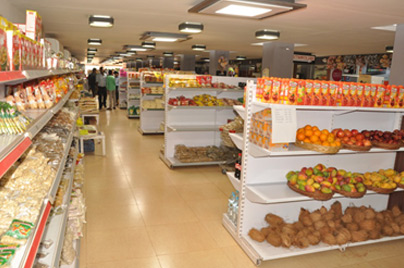
Local markets
Both the townships, Noamundi and Joda, have local markets. In addition, there are self-managed cooperative stores with membership facilities. Barbil and Jamshedpur are both nearby and they are the perfect spots for weekend shopping and fun.
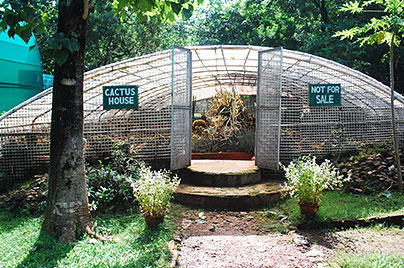
Nature spots
There are also various nature spots around the area for a picturesque visit. The Murga Mahadeva waterfall in Noamundi would be a perfect example. There are various parks and gardens as well such as the Medicinal Park and Water Harvesting Park in Noamundi along with the Dorabji Park and Vegetables Garden in Joda.

Club facility
Noamundi Officers Club and Joda Valley Club have facilities such as badminton court, tennis court, billiards rooms, card room, pool room, library, gym, swimming pool, in-house restaurant, in house-bar, lounge and coffee room. Crèche facilities at both the locations ensure that children are cared for, so parents can go about their work without any worries.
Miscellaneous facilities
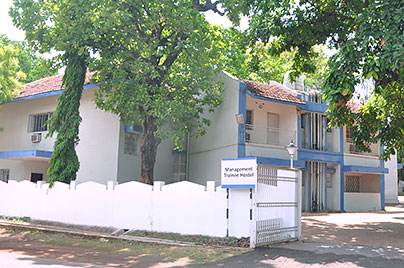
MT Hostel
Accommodation for Management Trainees in their first year training period is provided in the MT Hostel. There are a total of 16 rooms at both Noamundi and Joda. It has dining facility and common hall with TV facility. Drinking water and electricity supply is available 24x7.
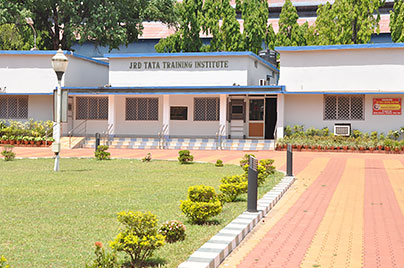
Training Centres
There are two well-established training centres at both Noamundi and Joda. Both training centres have all modern facilities for training. A knowledge centre is a part of the training centre at Noamundi and Joda. The knowledge centre is open for both employees and their family members.
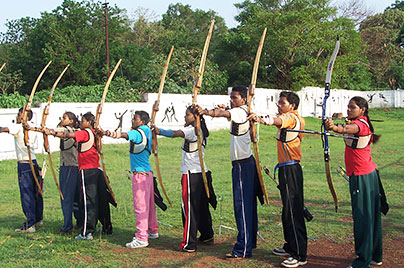
Sports
Cricket, football, table tennis and basketball are some of the sports in which tournaments are organised. Both locations at OMQ have a best-in-class sports complex. The sports complex at Noamundi is one of a kind with much scenic beauty at Raw Material location of Tata Steel. Day and night cricket tournaments are organised at both places namely Noamundi Premiere League and Joda Valley Premiere League.
Health is wealth
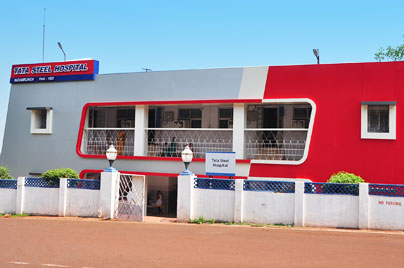
Medical Services
There are two major hospitals at Noamundi and Joda. Both are 75-bedded, multi-specialty hospitals having medicine, surgery, orthopaedics, paediatrics, eye, ENT, dermatology, pathology, radiology, anaesthesiology, occupational health services and physiotherapy departments. If the specialist doctors at Tata Steel Hospital, Noamundi and Joda feel that the patient requires super-specialty treatment, they refer the patient to Tata Main Hospital, Jamshedpur.
Vibrant community
The Ferro Alloys and Mineral Division, commonly known as FAMD, is a mining division. It has chromite ore, manganese ore and dolomite mines in Odisha, ferro-alloys production units (own and out-sourced) across many states and markets, ferro alloys and chrome concentrate in India and abroad. The three distinct business lines are – chrome, manganese and flux.
How to get there?
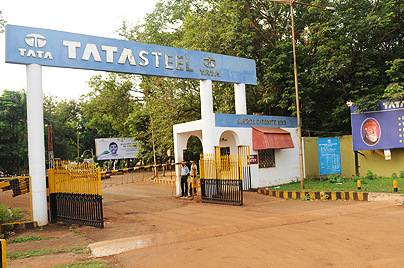
Sukinda Chromite Mine
Sukinda is situated at 55 Kms from JK Road, at 150 Kms from Bhubaneswar and 120 Kms from Cuttack. The nearest railway station is JK Road which is situated on the mainline between Kharagpur and Puri. It takes about an hour to reach Sukinda from JK Road. One can also fly into Biju Patnaik International Airport, Bhubaneswar (150 Kms) and then take a three-hour drive to Sukinda.
Locate on the map >
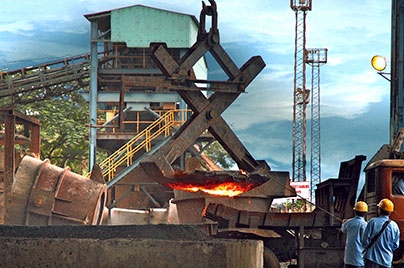
Ferro Alloys Plant (Bamnipal)
The Ferro Alloys Plant (FAP) is situated at Bamnipal in Keonjhar district of Odisha. It is nearly 40 Kms away from JK Road, 120 Kms from Bhubaneswar and 100 Kms from Cuttack. Tangiriapal is located only 7 Kms away from the nearest railway station. It takes 2.5 hours one-way to drive down from Biju Patnaik International Airport.
Locate on the map >
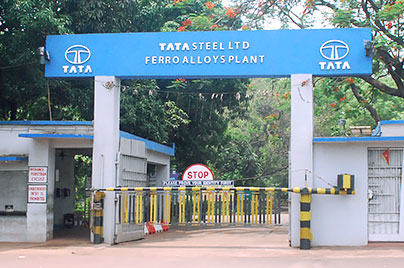
Ferro Alloys Plant (Joda)
Ferro Alloys Plant, Joda is one of the leading Ferro alloys producers in India with a capacity of 50,400 MT per year. The plant was commissioned in 1958, and is situated at Keonjhar district of Odisha. The plant is located 10 Kms from Barbil (a 30-min drive), 65 Kms from Keonjhar and 350 Kms from Bhubaneswar. The nearest railway station in Banspani from where it takes only 15 minutes to reach the plant location. Biju Paitnaik International Airport is located 350 Kms and takes 6.5 hours to travel one-way to Joda.
Locate on the map >
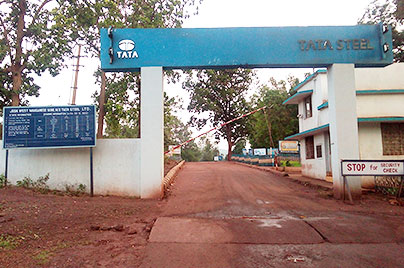
The Manganese (Mn) business at Joda
The Manganese (Mn) business at Joda consists of Ferro Alloys Plant, Joda and Mn Group of Mines which are the units of FAMD, Tata Steel. These are situated in Keonjhar district of Odisha and are well connected by road to Keonjhar (70 Km), to Barbil (20Km) and Jamshedpur (180Km).
The JWMM and BMM were established in 1928 while MMM and TMM were established in 1931 and 1932, respectively. The mining operation in this Group is semi-mechanised. FAP Joda along with other conversion plants form its customer base. Barabil, (20 Kms) and Banspani (5 Kms) are in proximity to Joda.
Locate on the map >
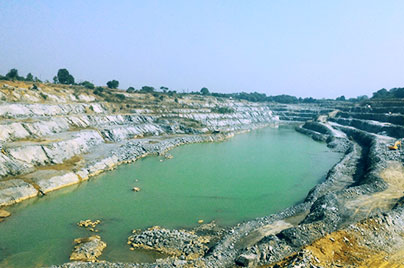
Dolomite Quarry (Gomardih)
Gomardih Dolomite Quarry was established in 1962 to provide flux to the Steel Plant at Jamshedpur. In the present times, it has extended its services to Kalinganagar Plant and other external customers. The unit is located 54 Kms west of Rourkela and 44 Kms east of Sundargarh town in Sundargarh district of Odisha. It is 13 Kms and 5 Kms from Rajgangpur and Sonakhan railway stations on Howrah-Mumbai line, respectively.mardih also lies only 3 Kms away from Rourkela-Sundargarh State Highway#10.
Ensuring a higher quality life
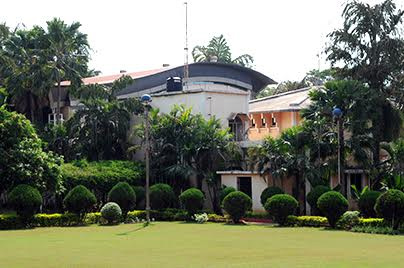
Sukinda
Sukinda has well-maintained residential colonies for officers and employees. There are also various natural spots in the area. The picturesque Sir Dorabji Tata Park would be a perfect example. We have Katepurty Recreation Club and Chrome Valley Club for employees, Mahila Samiti, Dance & Music School. The Katepurty Auditorium is completely air conditioned with a seating capacity of around 250. Considering fitness as a key to a healthy life, a gymnasium has been made available at Katepurty Club as well as Chrome Valley Club. There are Tata Class Edge interactive facilities in Stewart School and Saraswati Sisu Mandir at Sukinda.
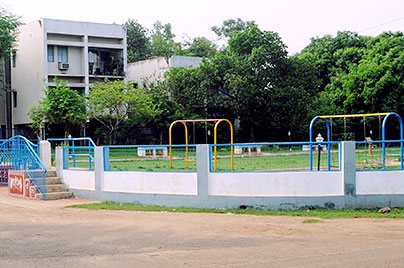
Bamnipal and Joda
Both Bamnipal and Joda have two parks for children and families. The residential colony atmardih is situated amidst greenery. It houses other facilities such as banks, post office, shopping centre, parks, gardens, children’s park, etc. A key feature atmardih is ensuring child safety while commuting to and from school. At Bamnipal, we have the Kusei Club and guest houses for officers.mardih too offers guest house facilities.
The Valley Club with many modern amenities, several guest houses, a DAV School and many more facilities, make life at Joda not just convenient but vibrant too.
Miscellaneous facilities
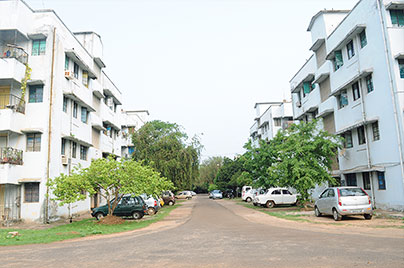
Accommodation
Housing Facilities are available at Sukinda for officers and employees. Management trainee hostel and two guest houses are also available for new joinees/visiting officers. Drinking water and electricity supply is available 24x7.
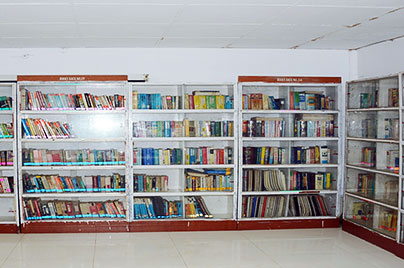
Knowledge & Training Centres
The Knowledge Centre at Sukinda is equipped with various manuals and books related to mining, science, technical advancement as well as for a casual read. Besides this, there are statutory trainings provided at the Vocational Training Centre. Skill development training is also provided to the employees with the help of Tata Management Development Centre, SNTI and other external agencies. Computer literacy classes, self-defence and legal awareness sessions are also organised exclusively for ladies.
The rich library at Bamnipal houses various manuals,, engineering books relevant to metallurgy, electrical, mechanical & computer science, and story books. Teams from SNTI and Kalinganagar help to provide intensive on-job training to people.
The Joda-based knowledge centre provides books, manuals, internet surfing etc. We have common vocational training centre at Joda for FAMD & OMQ where employees and contract employees are sent for vocational, refresher, safety and other job related trainings.
Manganese Group of Mines has a Group Vocational Training Centre. It was established in 1976, and is equipped with a library accommodation for trainees. This library here has fiction and non-fiction books as well as reference material on a multitude of topics.
Gomardih has one vocational training centre that provides statutory training to employees and contractors’ employees. The main conference hall also serves as Knowledge Centre for different knowledge-enhancing activities.

Sports
Sukinda provides facilities like Central Playground for cricket & football, indoor badminton court, basketball court and park for its residents.
Joda has a recreation club at Baneikala. It is equipped with an auditorium, badminton court, table tennis, fitness centre and with space for entertainment. There is also a big playground for sports & different cultural programmes.
Joda West Manganese Mines has a Central Sports Ground wherein football, cricket and other athletic sports are organised for employees and the community.
Themardih residential area has different sporting facilities for football and hockey. It also has a cricket pitch, volleyball court and other outdoor sports facilities.
Health is wealth
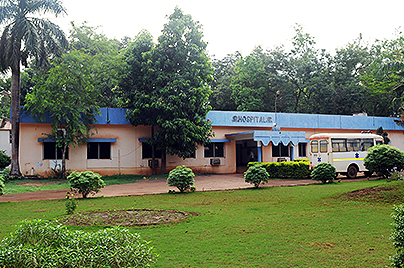
Medical Services
There is a 33-bedded hospital at Sukinda with ICU facility whereas at Bamnipal, there is a three-bedded dispensary with a qualified doctor present round-the-clock. Besides, we have common medical services at Tata Steel Hospital, Joda, which is the lifeline for all the employees, officers, contractors of FAMD & OMQ, including the peripheral villagers. The hospital has 75-beds with 24x7 doctors and staff on duty. The hospital also caters to employees of Manganese Group of Mines. Medical facility atmardih comprises a dispensary with referral facilities to nursing home at Rajgangpur, Life Line Hospital and IGH Hospital at Rourkela, There is also an all-equipped medical van on standby.
Vibrant community
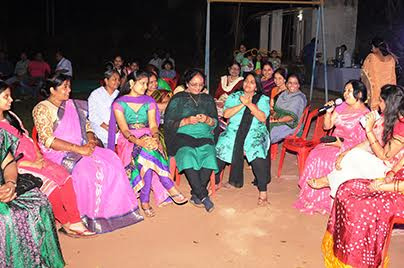
Vibrant community
FAMD exhibits a remarkable sense of social bonding which binds the employee families and the larger community in and around the Division. Celebrations like ‘Chat’ puja, Diwali, Holi as well as community services propagated through the Mahila Samiti, cultural functions and get-togethers have created and sustained a strong camaraderie over the years. True to its name, the FAM community is one big ‘FAM’ily!
Jharia Division, a colliery is situated 10 Km away from Dhanbad, Jharkhand.
How to get there?
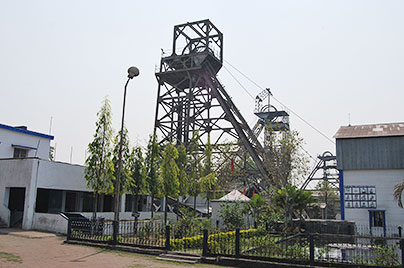
Jharia
Jharia Division is well connected with Dhanbad railway station situated at a distance of 13Km. Dhanbad junction is a prime stop-over on the East Central Railway zone where it connects Howrah and New Delhi. Superfast trains like the Howrah Rajdhani, Sealdah Rajdhani, Duronto Express, Ranchi Howrah Shatabdi and several others halt at Dhanbad.
The National Highway (NH 2) and 32 are the major highways passing through Dhanbad. NH 2 is part of Golden Quadrilateral (GQ) highway network; Dhanbad lies in Kolkata-Delhi link of the Golden Quadrilateral network. NH2 is being converted into six lane expressway; NH 32 connects Dhanbad to Bokaro-Jamshedpur.
One can reach Jamadoba from Jamshedpur (150 Kms approx) and Ranchi (150 Kms approx) within 4 hours and from Kolkata (275 Kms approx) in 6 hours by road.
The nearest airport to Jharia is the Birsa Munda Airport at Ranchi. It is 140 Kms away from Jamadoba.
Locate on the map >
Ensuring a higher quality life
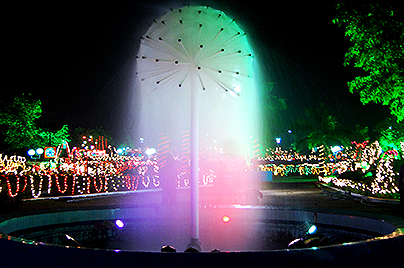
Colonies and Schools
The residential colonies for both officers and employees are spread out. The presence of several ICSE & CBSE board affiliated schools like the DAVs, Mount Carmel, De Nobili etc. in the vicinity (2Kms) of Jharia division ensure that employees’ children are nurtured within a good environment and education set-up.

Markets
Jharia has a prime market near Bank More which is about 8-15 Kms from both groups of the Division.
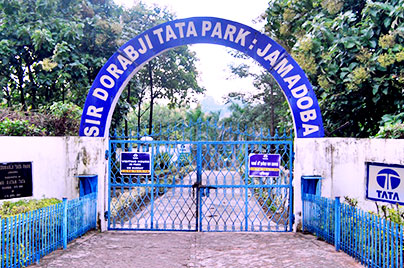
Parks & Gardens
The picturesque Sir Dorabji Tata park is spread over 6 hectares at Jamadoba. Besides, there is also a Millennium Park and Children’s Park at Digwadih No. 12 Officers’ Colony, a VIP Colony park at Bhelatand.
Some of the other attractions include the Big Bazar, INOX cinema, Maithan and Panchet dams.
The river Damodar flows through Jharia, besides six others.
Miscellaneous facilities
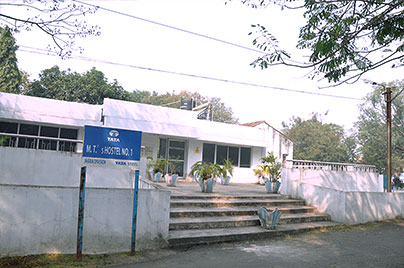
Hostel Facilities
The Division has accommodation facilities for Management Trainees in their first year of joining Tata Steel. It includes 16 rooms on twin-sharing basis, together with dining and common hall, as well as round the clock clear drinking water and electricity supply. The officers’ club is only 100 metres away from the hostel.
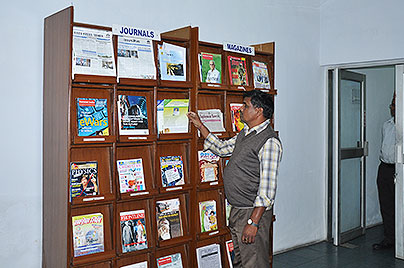
Knowledge Centre
Tata Steel has created several learning centres for its people to become self-reliant and more productive. The Information Department was established with a modest collection of 10,000 books in 1994. The immediate beneficiaries were the technical, research and managerial personnel who were enabled to keep themselves abreast with the latest developments in their respective fields through its libraries and publications. The facilities were forwarded soon after to the employees’ families and the general public. Presently, the Information Department has evolved into an active information network.
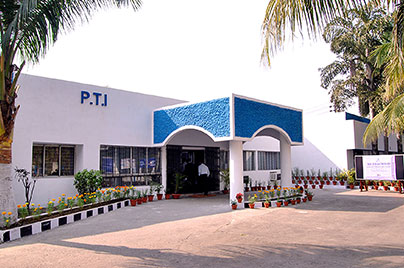
Training Centre
The first efforts to provide professional training to coal mine workers in India began when a Vocational Training centre was set up in Digwadih in 1967. It was subsequently extended to Sijua and Malkera. As a corollary to the expansion programme, a Mechanisation Training Centre was instituted at Jamadoba in 1971. In 1983, a group vocational training centre namely Professional Training Centre has been established at Jamadoba. The curriculum was designed to acquaint employees with new technologies and create a task force among them. On-the-job training was imparted in simulated underground condition at the training gallery.
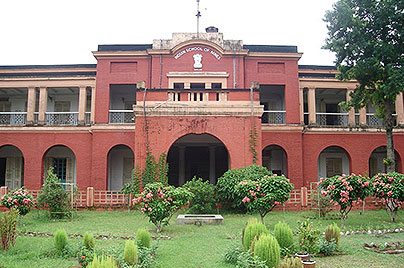
Progressive approach
A new concept in coal mining was introduced when multi-skilled workers were trained to undertake responsibilities of electro-mechanics capable of executing repair, overhaul and maintenance jobs. The graduate engineers representing various areas of specialisation have undergone training at the centre and taken up positions in the management cadre at Jharia.
To create and sustain interest among trainees, the centre uses attractive and instructive training aids like model training gallery in mining, mechanical and electrical stream etc. Skill development programmes have been enhanced, over the years, with increase in mining mechanisation.
Trainings also include courses to increase skill of critical category employee. These include 4Q-skill mapping method (Toyota model), Enterprise Capability Building System (ECBS) etc.
Collaborations:
- Indian School of Mines, Dhanbad: A long-standing collaboration with Tata Steel, the institute helps in conducting various ventilation simulation studies, environmental monitoring and laboratory tests
- Central Institute of Mine & Fuel Research (CIMFR), Dhanbad: Provides assistance for various studies and research intermittently
- Directorate General of Mines Safety (DGMS): Key involvement to ensure safety & awareness programme for all working personnel at mines.
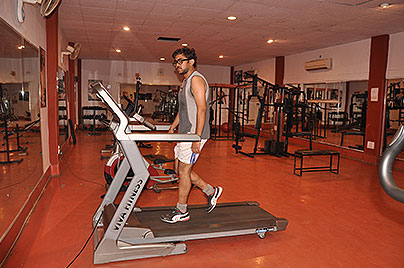
Recreation and relaxation:
The Digwadih Club of Jharia has facilities such as badminton court, basketball court, tennis court, billiards rooms, card room, pool room, library, gym, swimming pool, in-house restaurant, in house-bar, lounge, coffee room for unwinding with friends and family. The Digwadih Cricket Stadium ground is equipped with flood light facility. In the past, the ground has hosted several Ranji Trophy matches.
Health is wealth
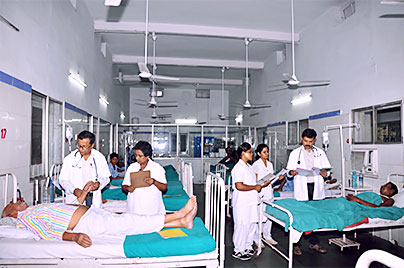
Medical Services
Jharia has a total of seven dispensaries attached to the different collieries and one Tata Central Hospital (TCH) at Jamadoba. While Out Patient Care is provided at the dispensaries, the more critical cases are treated at the 130-bedded multi-speciality TCH. For super-speciality treatment, patients are referred to Tata Main Hospital, Jamshedpur.
Vibrant community
The picturesque West Bokaro Division situated in the highlands of Chota Nagpur plateau is a story of mining evolution at Tata Steel. It is a fully mechanised opencast mine that produces 7 million tonnes per annum of coal for steel making at Jamshedpur.
West Bokaro came into existence in 1948 as an independent coal company managed by M/S Anderson Wright. Tata Steel acquired the Company in 1956 to meet its requirement of metallurgical grade coal for iron making. Subsequently, in 1976, West Bokaro was made a Division of Tata Steel. In 1974, when coal mines were nationalised, West Bokaro was exempted as it produced coal only for captive consumption of the Steel Works.
How to get there?
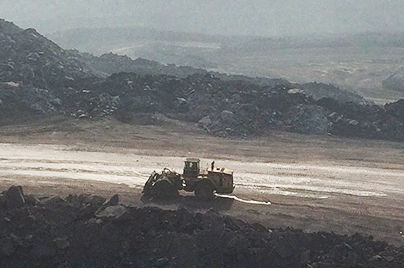
West Bokaro
The serene setting of West Bokaro is a soul’s delight. A well-maintained eco-space greets one upon arrival and remains etched in memory. Although a mining zone, the cleanliness presents a perpetual retreat to its residents. The employee community has an activity-filled round-the year calendar that is not only entertaining but also a learning experience, especially for the children.
So a well-balanced lifestyle is what you’re looking for, West Bokaro might just be the place for you!
West Bokaro on the map >
Ensuring a higher quality life

Basic Amenities
The Division is situated within a leasehold area of 4,300 acres. Over the years, it has become self- reliant with its own markets, schools, medical facilities and other amenities. The officers’ accommodation is spread over several colonies located in proximity to each other. The presence of several CBSE board affiliated schools like the DAVs and Holy Cross School ensure that employees’ children are nurtured within aod environment and education set-up.

Markets
The Division has its very own shopping complex in which one can meet all their daily requirements. Bigger markets are present at Ramgarh, Hazaribagh and Ranchi.

Parks & Gardens
The Division is adorned with JRD Park that has its ownlf course and a jogger’s track.
The other nearby attractions includes the JD Hi-Street, Glitz Cinemas, Kanke Dam, Birsa Munda Biological Park and Betla National Park.
All round facilities
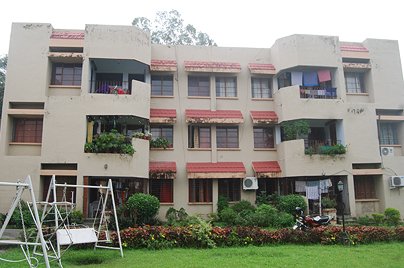
Accommodation
The Division has accommodation facilities for the Management Trainees in their first year of joining Tata Steel. It has dining and common hall facilities, as well as round the clock clear drinking water and electricity supply. The officers’ club is only 150 metres away from the hostel.

Knowledge Centre
West Bokaro Division has a 10,000-book strong knowledge centre where one can read up on a vast range of topics from managerial to mining. The Library Information System on Tata Steel’s Intranet provides a robust mechanism for book circulation.

Training Centre
The JRD Tata Training Centre at West Bokaro was established in 1996 to create passion among the employees to transform the Division into a highly skilled, knowledgeable, innovative and competent workforce to meet the future needs of the organisation. The institution imparts training to employees on statutory norms, safety, skill and behavioural aspects.
Skill development programmes have been enhanced, over the years, with increase in mining mechanisation. Trainings also include modules in HEMM, Electrical, Mechanical, 4Q-skill mapping method (Toyota model), Enterprise Capability Building System (ECBS), Simulator-based Business Improvement Programme, etc.
Health is wealth
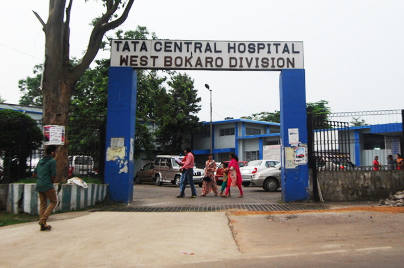
Medical Services
West Bokaro Division has a hospital called Tata Central Hospital at Ghatotand and 6 dispensaries in nearby villages. Tata Central Hospital was established in the year 1946 and is a 65-bed hospital having more than 80 medical staff.
The Tata Central Hospital here is equipped with state-of- the-art equipment and ICU and NICU facilities with round the clock emergency facilities including a blood bank and ambulance services. Moreover, it has a Telemedicine facility, modern operation theatre having facility of two parallel operations.
Vibrant community
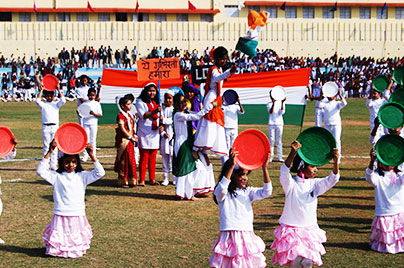
There is a strong trend of social service which helps the locals and spreads smiles among them. Spouses often take part in CSR activities such as hospital visits, distribution of educational material and outings with underprivileged children amongst other things. There are various competitions organised for children and events for them to take part in such as drawing competitions and dramatic displays.










